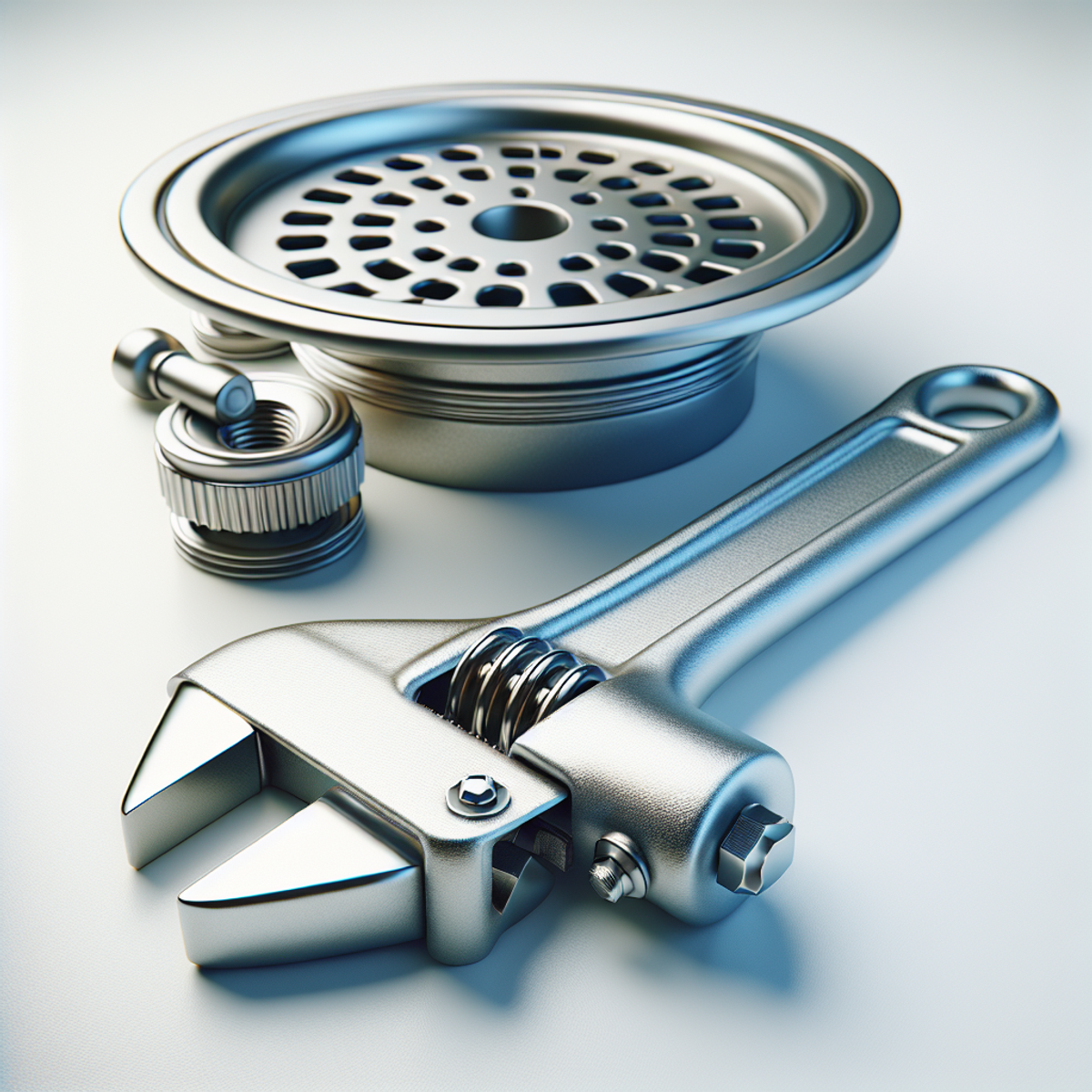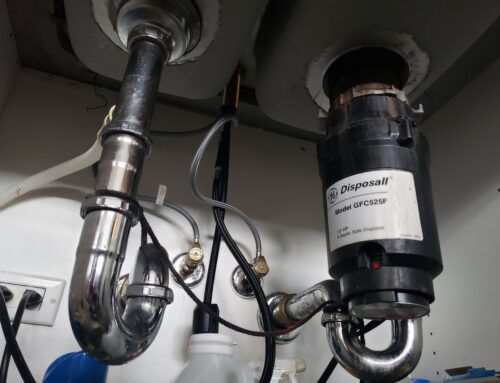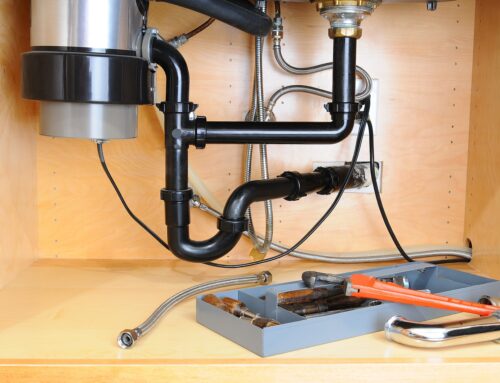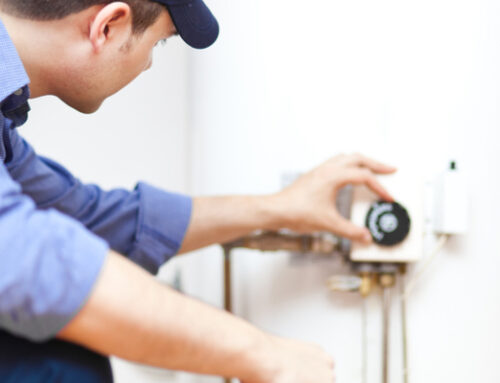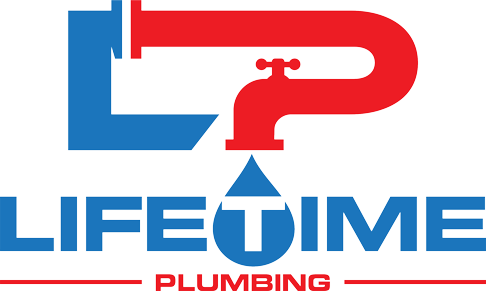Table of Contents
- 1 Home Plumbing Maintenance Checklist
- 2 Drain Maintenance
- 3 Faucet and Fixture Maintenance
- 4 Toilet Maintenance
- 5 Water Heater Maintenance
- 6 Garbage Disposal Maintenance
- 7 Pipe Inspection and Leak Detection
- 8 Shut-off Valve Location and Maintenance
- 9 Septic System and Sewer Line Maintenance
- 10 Outdoor Plumbing Maintenance
- 11 Conclusion
Home Plumbing Maintenance Checklist
A home plumbing maintenance checklist is a comprehensive guide that helps you keep your plumbing system in top shape. Regular plumbing maintenance is crucial for preventing costly issues and ensuring the longevity of your system. In this article, we will provide step-by-step instructions for each task, along with expert tips and recommendations.
By following this checklist, you can perform simple DIY repairs and preventive measures to keep your plumbing system running smoothly. However, for any complex plumbing needs, it’s always a good idea to seek professional assistance. Our professional plumbers at Lifetime Plumbing can provide the expertise needed for more complicated tasks.
The goal of this Plumbing Maintenance Checklist is to empower homeowners with the knowledge and tools to maintain their plumbing systems effectively. By investing a little time and effort into regular maintenance, you can avoid major problems down the line.
So let’s dive into the various aspects of home plumbing maintenance and explore how you can keep your system in tip-top condition!
Drain Maintenance
Drain maintenance is a crucial aspect of home plumbing care, as clogs can lead to backups and water damage. To prevent such issues, consider the following tips:
- Preventing Clogs: Utilize a drain cover to catch hair and debris before they enter the pipes. Avoid dumping grease and large food particles down the sink, as these can solidify and cause blockages.
- Professional Cleaning: While DIY methods are effective for day-to-day maintenance, periodic professional drain cleaning offers a thorough solution. Professional plumbers use specialized tools to remove stubborn clogs and build-up, ensuring the optimal flow of water through your pipes.
By implementing these practices, you can maintain the health of your plumbing system and prevent costly repairs in the long run.
Faucet and Fixture Maintenance
Faucets and fixtures are important for both the function and appearance of your plumbing system. Here are some things you should do to keep them in good condition:
Regular Inspections
Check your faucets and fixtures regularly to look for any problems, like leaks or parts that are wearing out. It’s better to catch these issues early before they turn into bigger, more expensive ones.
Watch Out for Corrosion
Keep an eye out for any signs of corrosion on the visible pipes connected to your faucets and fixtures. This could be a sign that there are underlying problems with your plumbing system that need attention.
DIY Repairs for Common Faucet Problems
Some faucet problems can be fixed on your own without calling a plumber. Here are a few tips:
- Fix Leaks and Drips: If you have a leaky faucet, it’s often caused by a worn-out washer or O-ring. You can try replacing these parts yourself to stop the leaking.
- Clean Aerator: The aerator is the small screen at the end of your faucet where the water comes out ( read more about faucet parts diagram ). Over time, it can get clogged with mineral deposits, affecting water flow. Remove the aerator and clean it thoroughly to restore proper water flow.
Taking care of your faucets and fixtures through regular maintenance will help prevent water damage and keep your plumbing system running smoothly.
Toilet Maintenance
Toilet maintenance is crucial for preventing water wastage, leaks, and running toilets. By regularly inspecting and maintaining key components like toilet flappers and tanks, you can ensure the efficient operation of your toilets and avoid potential water damage issues in your home.
Why Maintaining Toilet Flappers and Tanks Matters
One of the most important aspects of toilet maintenance is taking care of the flappers and tanks. Here’s why:
- Preventing Water Wastage: Regularly inspecting and maintaining toilet flappers is essential for preventing water wastage and ensuring proper flushing. Over time, flappers can degrade or accumulate mineral deposits, leading to inefficient sealing and water leakage. By checking and replacing worn-out flappers as needed, you can maintain optimal toilet functionality and prevent water-related issues.
- Avoiding Running Toilets: Toilet tanks play a critical role in regulating water flow and flushing efficiency. DIY repairs for common issues such as running toilets can include adjusting the chain length within the tank to achieve proper flush operation. Additionally, inspecting the tank for cracks or leaks is important to address any potential water damage concerns promptly.
Read more about Toilet Parts Diagram.
Simple Repairs You Can Try Yourself
Before calling a plumber, there are some simple repairs you can try on your own:
- Adjusting the Chain Length: If your toilet is running constantly, it could be due to a chain that is too long or too short. Try adjusting the chain length within the tank to see if that solves the problem.
- Checking for Cracks or Leaks: Conducting periodic inspections of your toilet bowls for cracks or leaks is essential for identifying early signs of potential problems. By addressing these issues proactively, you can prevent water leakage and structural damage in your bathroom.
By incorporating these simple maintenance tasks into your home plumbing checklist, you can ensure the efficient operation of your toilets while minimizing the risk of costly repairs associated with water damage and plumbing malfunctions.
Water Heater Maintenance
Regularly maintaining your water heater is important to keep it working well, save energy, and make it last longer. By doing a few easy things, you can avoid problems and save money on repairs later on. Here are some important tips for taking care of your water heater:
Flushing the Tank
Over time, sediment and minerals can build up inside the tank, making it less efficient and possibly causing damage. Flushing the tank once a year helps get rid of these deposits and keeps your water heater running smoothly. Here’s how to do it:
- Turn off the power (electricity or gas) to the water heater.
- Attach a hose to the drain valve at the bottom of the tank.
- Run the other end of the hose to a place where the water can drain safely, like outside or into a bucket.
- Open the drain valve and let the water flow out until it’s clear.
- Close the drain valve and fill up the tank again before turning the power back on.
Water Leak Detection
If your water heater has a leak, it can cause a lot of damage if you don’t catch it early. Checking for leaks regularly is important to avoid expensive repairs or having to get a new water heater. Here’s what you can do:
- Look around the bottom of the water heater for any wet spots or puddles.
- Check for dripping or pooling water around pipes, valves, or connections.
- Do a pressure test by closing the valve that lets water into the heater and watching to see if the pressure goes down over several hours.
If you see any leaks or think there might be a problem with your water heater, it’s best to call a plumber who can figure out what’s going on and fix it safely.
Taking good care of your water heater by doing regular maintenance not only makes it last longer but also saves you money on your energy bill. Following these simple steps will help keep your water heater working well and give you hot water when you need it.
Garbage Disposal Maintenance
Garbage disposals are a convenient and efficient tool in any kitchen, but they can encounter issues if not properly maintained. To ensure your garbage disposal remains clog-free and odorless, here are some proper usage habits and basic maintenance tips:
- Use cold water: Always run cold water when using the garbage disposal. Cold water helps solidify any grease or oils, allowing them to be chopped up and easily flushed away.
- Avoid fibrous or hard items: Fibrous foods like celery, artichokes, or corn husks can get tangled in the blades and cause clogs. Similarly, hard items such as bones or fruit pits should never be put down the garbage disposal as they can damage the blades.
- Cut large items into smaller pieces: Before putting large food scraps into the disposal, cut them into smaller, more manageable pieces. This reduces the strain on the blades and ensures smoother operation.
- Clean regularly: To prevent odors from building up, it’s important to clean your garbage disposal regularly. One easy method is by grinding ice cubes in the disposal to help remove any debris stuck to the blades.
- Freshen with citrus peels: Tossing a few citrus peels (such as lemon or orange) into the disposal can help naturally freshen it up while also breaking down any lingering food particles.
- Avoid chemical drain cleaners: While it may be tempting to use chemical drain cleaners to clear a clogged garbage disposal, these harsh chemicals can damage the unit over time. Instead, opt for natural methods like baking soda and vinegar or using a plunger if you encounter a clog.
Remember, safety is key when performing any maintenance on your garbage disposal. Always disconnect the power before attempting any repairs or inspections.
Pipe Inspection and Leak Detection
Pipe inspection is an essential part of keeping your home’s plumbing in good shape. Regular check-ups can help you find and fix any leaks before they become major issues. Here are some tips for maintaining your plumbing system:
Regular Inspections
Make sure to stress the importance of regular pipe inspections to catch potential leaks early on. This can be done by a professional plumber or as a DIY project if you’re comfortable with it. During an inspection, look out for any signs of damage or wear, such as:
- Corrosion on metal pipes
- Cracks or breaks in the pipes
- Loose fittings or connections
- Signs of water damage (stains, mold, etc.)
Tools for Detection
There are a few tools you can use to help with leak detection:
- Moisture Meter: This handy device can measure the moisture levels in your walls, floors, or ceilings. If there’s a hidden leak, it may cause an increase in moisture that can be detected by the meter.
- Dye Test: This involves adding colored dye to your toilet tank and waiting to see if it appears in the bowl without flushing. If it does, there may be a leak in the flapper valve that needs fixing.
Importance of Small Leaks
Even small water leaks can be a sign of underlying problems in your plumbing system. They could indicate:
- Deteriorating pipes
- Loose fittings or connections
- Excessive water pressure
Addressing these issues promptly can prevent more significant problems down the line. Ignoring small leaks can lead to mold growth, structural damage, and increased water bills.
By emphasizing the importance of regular pipe inspection and leak detection, homeowners can proactively maintain their plumbing systems and avoid potential disasters. Encouraging readers to incorporate these tasks into their home maintenance routines will help them ensure the health and longevity of their plumbing systems.
Shut-off Valve Location and Maintenance
Knowing where your home’s shut-off valve is located is crucial in case of an emergency. If a plumbing emergency occurs, like a burst pipe or major leak, being able to find and turn off the main water supply quickly can help prevent extensive water damage to your property.
Here are some important steps to follow regarding shut-off valve maintenance:
- Inspect the shut-off valve regularly: Check the shut-off valve periodically to make sure it’s working properly. Look for any signs of damage or rust.
- Turn the valve on and off: To prevent the valve from getting stuck due to lack of use, turn it on and off a few times.
- Get professional help if needed: If you notice any issues with the shut-off valve, such as wear or corrosion, it’s best to contact a professional plumber to have it replaced or repaired.
- Educate everyone at home: Make sure all members of your household know where the shut-off valve is located and how to operate it. Consider using clear labels with instructions near the valve for easy reference during emergencies.
- Have the right tools: Familiarize yourself with any special tools that may be required to operate the shut-off valve, like a water meter key or wrench. Keep these tools in a convenient place near the valve so you can find them quickly if needed.
By taking these maintenance steps and ensuring easy access to your home’s shut-off valve, you can minimize potential water damage and handle emergencies more effectively.
Septic System and Sewer Line Maintenance
When it comes to properties not connected to a municipal sewage network, the importance of septic system and sewer line maintenance cannot be overstated. Regular inspection and maintenance are crucial for preventing potential issues and ensuring the proper functioning of these specialized systems.
Some DIY tasks can help with septic system and sewer line maintenance, such as septic tank pumping or using enzymatic treatments. However, due to the specialized nature of these systems, it is highly recommended to seek professional inspections on a periodic basis. Professional plumbers have the expertise and equipment necessary to conduct thorough assessments and address any underlying issues effectively.
Regular maintenance of septic systems and sewer lines not only helps prevent stoppages but also reduces the risk of health hazards associated with malfunctioning systems. By staying proactive in maintaining these essential components of your home’s plumbing infrastructure, you can avoid costly repairs and ensure the long-term efficiency of your septic system and sewer line.
Outdoor Plumbing Maintenance
Outdoor plumbing fixtures are exposed to the elements, which means they need special attention to keep them in good working order. This is especially true during the winter months when freezing temperatures can cause problems. In this section, we’ll discuss two important aspects of outdoor plumbing maintenance: winterization and leak detection.
Winterization
Freezing temperatures can cause outdoor faucets and sprinkler systems to freeze, leading to burst pipes and expensive repairs. That’s why it’s crucial to winterize these fixtures before the cold weather arrives. Here’s what you need to do:
- Drain any remaining water: Start by turning off the outdoor water supply and opening all the faucets to drain any water that’s still in the pipes. Be sure to include any attached hoses or sprinkler heads in this process.
- Insulate exposed pipes: If you have any outdoor pipes that are prone to freezing, such as those located in unheated areas or along exterior walls, consider insulating them with foam sleeves or heat tape.
- Cover outdoor faucets: Use faucet covers or wrap old towels around the faucets to provide some insulation and protect them from freezing temperatures.
- Shut off and drain sprinkler systems: If you have an underground sprinkler system, you’ll need to shut off the water supply and drain the system to prevent damage from freezing.
Leak Detection
Even a small leak in an outdoor faucet can waste a significant amount of water over time. It’s important to regularly check for leaks and address them promptly. Here are some tips for detecting and fixing leaks:
- Visual inspection: Look for any visible signs of leaks, such as dripping water or puddles around the base of the faucet.
- Pressure testing: Turn off all the faucets and hoses connected to your outdoor plumbing system, then check if the water meter continues to run. If it does, you may have a hidden leak that needs to be investigated.
Inspecting Outdoor Faucets
In addition to leak detection, it’s a good idea to inspect your outdoor faucets for any damage or wear. Here’s what you can do:
- Check for damage: Look closely at the faucets for any signs of corrosion, rust, or physical damage.
- Test for leaks: Turn on each faucet and check if there’s any water seeping out around the connections. If you notice a leak, try tightening the fittings or replace any worn-out washers.
Sprinkler System Maintenance
Before you start using your sprinkler system again in the spring, take some time to inspect and prepare it for the upcoming watering season. Here’s how:
- Inspect for damage: Walk around your yard and look for any broken sprinkler heads, damaged pipes, or clogged nozzles. Replace or repair any faulty components as needed.
- Test each zone: Turn on each zone of your sprinkler system and observe if the water is being distributed evenly and reaching all the intended areas. Adjust the sprinkler heads if necessary to ensure proper coverage.
By following these maintenance tips, you can keep your outdoor plumbing fixtures in good shape and avoid potential problems caused by changing weather conditions.
Conclusion
Regular home plumbing maintenance is essential for preventing costly issues and ensuring the longevity of your system. By following a comprehensive checklist and performing simple DIY tasks, you can keep your plumbing system in optimal condition. Here are the key takeaways:
- Save money and avoid breakdowns: Regular maintenance helps you catch small problems before they turn into major issues that require expensive repairs. By investing a little time and effort into preventative measures, you can save yourself from the inconvenience and financial burden of unexpected plumbing emergencies.
- Download the checklist: To make it easier for you to create your own home plumbing maintenance routine, we have provided a downloadable checklist. This checklist includes step-by-step instructions for each task discussed in this article, along with expert tips and recommendations. Use it as a guide to ensure you don’t miss any important maintenance tasks.
- Contact professionals when needed: While this checklist primarily focuses on simple DIY measures, there may be instances where you need professional assistance. For complex plumbing needs or if you’re unsure about tackling a particular task, don’t hesitate to reach out to our trusted plumbers in Chicago.
Remember, maintaining a functional plumbing system is not only about preventing leaks or clogs but also about preserving the overall comfort and convenience of your home. By incorporating regular plumbing maintenance into your routine, you can enjoy peace of mind knowing that your plumbing system is in good shape.
So start implementing these maintenance tasks today and keep your plumbing system running smoothly for years to come!
More Posts You May Find Interesting
Table of Contents
- 1 Home Plumbing Maintenance Checklist
- 2 Drain Maintenance
- 3 Faucet and Fixture Maintenance
- 4 Toilet Maintenance
- 5 Water Heater Maintenance
- 6 Garbage Disposal Maintenance
- 7 Pipe Inspection and Leak Detection
- 8 Shut-off Valve Location and Maintenance
- 9 Septic System and Sewer Line Maintenance
- 10 Outdoor Plumbing Maintenance
- 11 Conclusion

